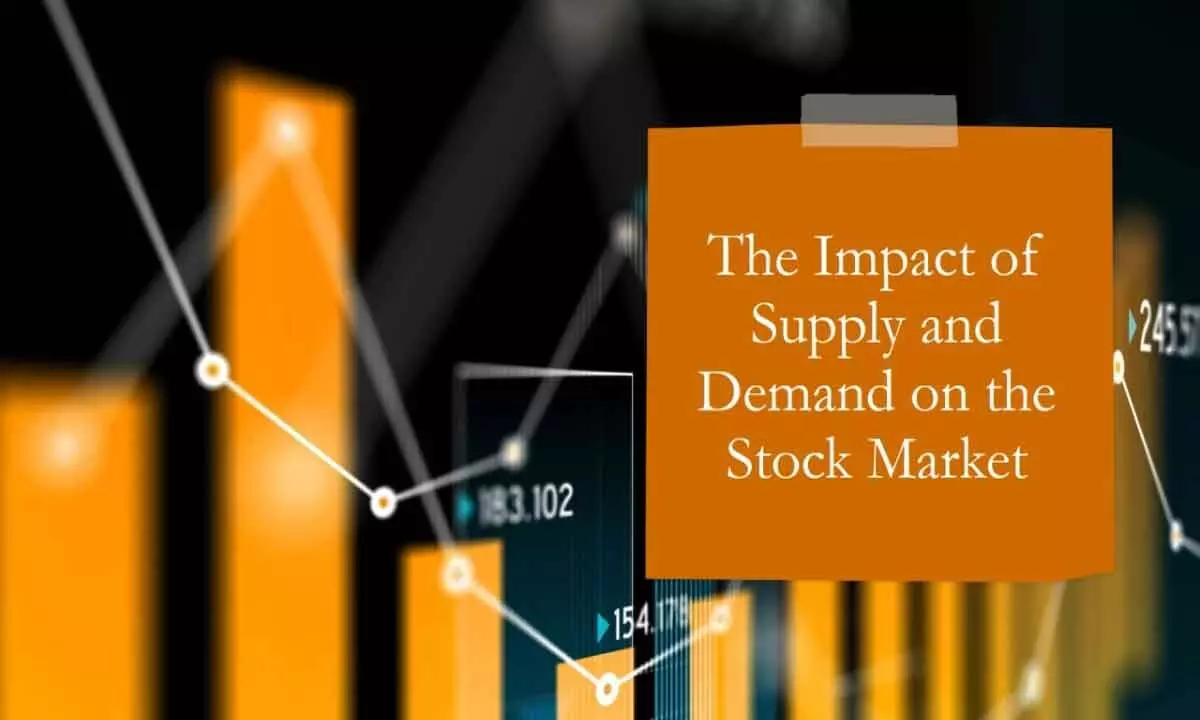Do the laws of supply and demand have any effect on stock price movements?

When you think about the stock market, you may often wonder why prices move up or down. Many factors impact stock prices, such as company performance, economic indicators, interest rates, and geopolitical events, but one of the core principles is the law of supply and demand.
When you think about the stock market, you may often wonder why prices move up or down. Many factors impact stock prices, such as company performance, economic indicators, interest rates, and geopolitical events, but one of the core principles is the law of supply and demand.
If more people want to purchase stock (high demand), the price generally rises. In contrast, if more people want to sell (high supply), the price tends to fall. But how exactly does this work in the stock market, and does the law of supply and demand has an actual impact?
Let’s break it down in simple terms.
Yes, the law of supply and demand does impact stock price movements, and here is how:
1) Demand increases, prices rise
When a company like Suzlon Energy reports positive news, such as better-than-anticipated earnings or the acquisition of a huge renewable energy project, investor interest in stock usually surges. This enhanced demand results in a rise in the stock price as many buyers are competing to buy a limited number of shares.
More working capital flowing into the stock owing to positive sentiment or growth potential can drive this demand higher. As an outcome, the price rises until the number of sellers and buyers evens out again.
2) Supply increases, prices fall
If shareholders of a company decide to sell their shares in huge volumes, this enhances the supply of available shares in the market. When there are more sellers as compared to buyers, the price will naturally fall as sellers compete to offload their shares at increasingly lower prices.
This can happen owing to bad news like disappointing earnings reports or industry-based challenges. In the share market investment vertical, this dynamic is often observed when a stock faces a sudden rise in selling pressure after negative media coverage or a drop in investor confidence.
3) Market sentiment
The thorough market sentiment greatly impacts stock prices. During periods of strong economic growth or favourable government policies, retail investors are usually optimistic regarding stock market investment, resulting in higher demand for stocks across the board. This higher demand pushes prices up.
In contrast, during times of economic slowdown, political instability, or global downturns, negative sentiments creep in. Retail investors might become cautious and begin selling their shares, causing an enhancement in supply, which can drag stock prices down.
Note that market sentiments serve as a mood indicator for the stock market, impacting demand and supply considerably.
4) News and events
News and announcements play an essential role in shaping the supply and demand balance for specific stocks. For instance, if Suzlon Energy gets a huge renewable energy project or the government introduces suitable policies for the renewable energy sector, it can generate positive news.
This news boosts investor confidence, resulting in enhanced demand, which drives the Suzlon Energy stock prices upward. In contrast, unfavourable news or updates such as missed project deadlines or regulatory challenges can enhance the supply of shares as shareholders try to exit their positions, resulting in a fall in stock prices.
5) Market liquidity
Stocks that have higher liquidity, such as large-cap companies, tend to have stable price movements as their demand and supply balance is more easily managed. In contrast, mid-cap or small-cap stocks might experience sharp price fluctuations owing to lower liquidity.
A sudden spike in demand, such as institutional buying, can push the stock price up drastically as there are fewer shares available for trade. Likewise, a sudden increase in supply, such as a large number of shareholders selling off, can cause a steep decline in price.
Liquidity ensures smoother transitions in price depending on demand and supply changes.
6) Foreign investment flow
Foreign institutional investors (FIIs) have a considerable impact on stock prices. When FIIs increase their investment in India's stocks, the demand for Indian stocks rises, driving up prices.
In contrast, when FIIs pull out their investments, this increases the stocks’ supply in the market, which puts downward pressure on prices. The flow of foreign funds is a crucial factor driving the movement of stocks, particularly in sectors like infrastructure and energy.
Ending note
The laws of demand and supply have a direct impact on stock price movements. When demand exceeds supply, prices rise, and when supply exceeds demand, prices fall. This basic principle applies to all stocks and is influenced by distinct factors like market sentiment, news and updates, liquidity and foreign investments.
By being aware of how these forces work together, retail investors can better understand the dynamic share market and make better investment decisions. Moreover, government policies and economic indicators even play an imperative role in shaping the market environment.
Staying updated about these elements can endow investors a competitive edge in predicting market trends.

















